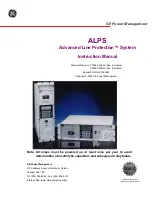
4.1.4 IP traffic
The use of Ethernet based network for industrial automation purposes, calls for careful and thorough network design. Especially the use of active network
components like switches and routers requires detailed know-how about the behaviour of IP traffic.
Some important issues:
Multicast
Multicast traffic; is traffic that is addressed to a number of recipients. Each host processes the received multicast packet to determine if it is the target for the
packet. If not, the IP package is discarded. This causes an excessive network load of each node in the network since they are flooded with multicast packages.
The nature of traffic is that all Originator-to-Target traffic is Unicast (point-to-point) but Target-to-Originator traffic is optional Multicast. This enables that several
listen only -connections can be made to a single host.
In switched networks hosts also have the risk of becoming flooded with multicast traffic. A switch usually forwards traffic by MAC address tables build by looking
into the source address field of all the frames it receives.
A multicast MAC address is never used as a source address for a packet. Such addresses do not appear in the MAC address table, and the switch has no method
for learning them, so it will just forward all multicast traffic to all connected hosts.
IGMP
IGMP (Internet Group Management Protocol) is an integrated part of IP. It allows hosts to join or leave a multicast host group. Group membership information is
exchanged between a specific host and the nearest multicast router.
Spanning Tree Protocol (STP)
For an Ethernet network to function properly, only one active path can exist between two nodes. Spanning-Tree Protocol is a link management protocol that
provides path redundancy while preventing undesirable loops in the network.
When loops occur, some switches see stations appear on both sides of it self. This condition confuses the forwarding algorithm and allows for duplicate frames
to be forwarded.
To provide path redundancy, Spanning-Tree Protocol defines a tree that spans all switches in an extended network. Spanning-Tree Protocol forces certain
redundant data paths into a standby (blocked) state. If one network segment in the Spanning-Tree Protocol becomes unreachable, or if Spanning-Tree Protocol
costs change, the spanning-tree algorithm reconfigures the spanning-tree topology and re-establishes the link by activating the standby path.
Spanning-Tree Protocol operation is necessary if the AF-650 GP or AF-600 FP’s are running in a ring/redundant line topology.
Modbus TCP
21
4
















































